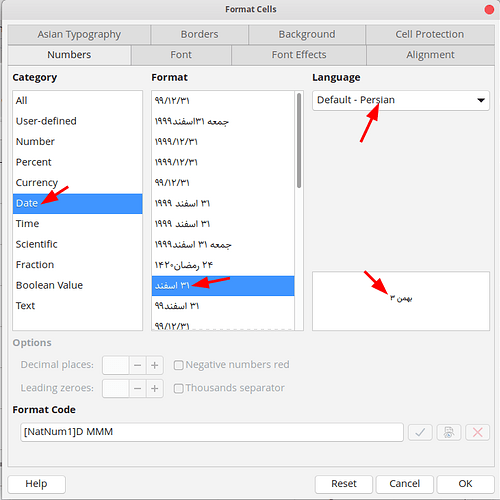In RTL context, numbers in Arabic (“European” ASCII) digits (or any sequence of Latin or other LTR script characters for that matter) are still displayed (and cursor-travelled) LTR as usual, but the position of that sequence should be in the RTL direction. However, here we have Arabic-Indic digits, so no direction switching should occur. The format code D MMM in this example produces the physical string / character sequence {U+06F3,U+0020,U+0628,U+0647,U+0645,U+0646} and it’s up to the output rendering to display that in proper RTL logical context. i.e. the expression
=TEXT(DATE(2023;11;3);"[NatNum1]D MMM")
in fa-IR locale results in ۳ بهمن with
| Character |
Unicode |
| ۳ |
U+06F3 |
|
U+0020 |
| ب |
U+0628 |
| ه |
U+0647 |
| م |
U+0645 |
| ن |
U+0646 |
whereas in ar-DZ locale it is ٣ نوفمبر with
| Character |
Unicode |
| ٣ |
U+0663 |
|
U+0020 |
| ن |
U+0646 |
| و |
U+0648 |
| ف |
U+0641 |
| م |
U+0645 |
| ب |
U+0628 |
| ر |
U+0631 |
Characters as =MID(A$1;B2;1), =MID(A$1;B3;1), … and Unicode as ="U+"&BASE(UNICODE(C2);16;4), ="U+"&BASE(UNICODE(C3);16;4), …
A difference is that fa-IR uses ۳ U+06F3 EXTENDED ARABIC-INDIC DIGIT THREE, while ar-DZ uses ٣ U+0663 ARABIC-INDIC DIGIT THREE; maybe those have different BiDi properties, but maybe also the characters used in month names, didn’t look it up. That would have to be investigated if the bug was filed…


